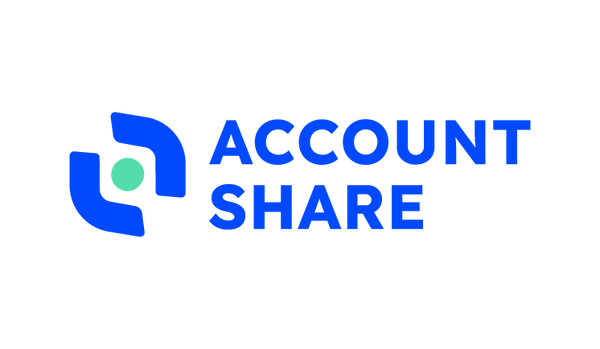
8 Ways to Save Money on Subscriptions in 2025
Share
Unlocking Savings: Taming Your Subscription Jungle
Subscriptions provide convenient access to entertainment, software, and more. But these recurring costs can drain your budget. This listicle offers eight actionable strategies to save money without sacrificing essential services. Learn to optimize spending, negotiate better deals, and uncover hidden savings. Discover how to audit your current subscriptions, rotate services, leverage bundles, and find free alternatives. We'll also explore annual discounts, negotiation tactics, special status discounts, and family plan sharing to maximize your savings.
1. Subscription Auditing and Inventory
The cornerstone of any effective subscription management strategy is a thorough audit and inventory. This crucial first step involves creating a comprehensive list of all your active subscriptions and regularly reviewing them to identify areas for savings. By gaining a clear picture of where your money is going each month, you can make informed decisions about which services truly provide value and which are ripe for cancellation. This process empowers you to regain control of your recurring expenses and optimize your budget for maximum benefit.

This method deserves its place at the top of the list because it establishes a foundation for all subsequent cost-saving measures. Without a clear understanding of your existing subscriptions, it's impossible to effectively optimize your spending. Key features of this approach include utilizing a spreadsheet or app for tracking, establishing regular review periods (e.g., monthly or quarterly), categorizing subscriptions by necessity (e.g., essential, nice-to-have, non-essential), and conducting a cost/benefit analysis for each. For a deeper dive into the topic, you can learn more about Subscription Auditing and Inventory.
For example, using personal finance tools like Mint or YNAB allows you to automatically track recurring expenses. Alternatively, a dedicated spreadsheet with details like subscription names, costs, and renewal dates provides a more hands-on approach. Setting calendar reminders for quarterly reviews ensures consistent monitoring.
Pros:
- Creates immediate awareness of total subscription costs, providing a potentially shocking but necessary reality check.
- Helps identify forgotten subscriptions or services you no longer use.
- Provides a baseline for further optimization strategies.
- Relatively simple to implement, requiring only basic organizational skills.
Cons:
- Can be time-consuming to set up initially, especially if you have numerous subscriptions.
- Requires ongoing maintenance to keep the inventory up-to-date.
- May not directly reduce costs without taking further action based on the audit's findings.
Actionable Tips for Success:
- Be Thorough: Include all subscriptions, even small ones. Those seemingly insignificant amounts can add up surprisingly quickly.
- Note Key Dates: Record cancellation policies and renewal dates to avoid unwanted charges. This is particularly crucial for services with automatic renewals.
- Prioritize: Rate each subscription on a scale of necessity (e.g., 1-5, with 1 being essential and 5 being easily cancellable).
- Schedule Reviews: Set a recurring calendar reminder for regular reviews. Consistency is key to maintaining control of your subscription spending.
- Involve the Family: If applicable, include family members in the inventory process to ensure all shared subscriptions are accounted for. This is especially relevant for families sharing streaming services, online gaming accounts, or cloud storage plans.
This approach is particularly beneficial for tech-savvy individuals juggling multiple digital services, families seeking to streamline shared accounts, small businesses looking to control software expenses, students on tight budgets, and digital nomads needing efficient account management across various locations. By taking the time to conduct a thorough subscription audit and maintaining an updated inventory, you lay the groundwork for significant long-term savings.
2. Subscription Rotation Strategy
The Subscription Rotation Strategy is a smart approach to managing your entertainment and digital service expenses. Instead of juggling multiple subscriptions simultaneously, this method involves subscribing to only one service at a time, enjoying its content, and then cancelling before moving on to the next service on your list. Think of it as a curated content buffet – you sample one dish at a time rather than piling everything onto your plate.
How it Works:
This strategy relies on planned, month-to-month subscription management. You identify the services you want to access throughout the year and create a schedule for subscribing and unsubscribing. This often involves "content batching," where you make a list of the shows or movies you want to watch on a specific platform and dedicate a month to consuming them. Strategic timing around new releases is key – plan your subscription around the debut of the content you're most eager to see. This cyclical approach to subscriptions allows you to maximize your viewing experience while minimizing costs.
Examples of Successful Implementation:
- Streaming Services: Subscribe to Disney+ for a month to catch the latest Marvel series, then switch to HBO Max for specific shows you've been meaning to watch, followed by Netflix for their original content.
- Music Streaming: Rotate between music services like Spotify, Apple Music, and Tidal to experience their unique features, exclusive content, and curated playlists without paying for all three concurrently.
- Seasonal Content: Plan your subscriptions around seasonal content releases. For example, subscribe to a sports streaming service during a specific sports season and cancel once it concludes.
Actionable Tips:
- Create a Watchlist: Before subscribing to any service, create a list of the movies, shows, or other content you want to consume. This ensures you make the most of your subscription period.
- Schedule Your Rotations: Plan your subscription periods around major release dates to ensure you don't miss the content you're most anticipating.
- Download Content: Whenever possible, download content for offline viewing. This allows you to continue enjoying content even after you've cancelled the subscription.
- Set Reminders: Use calendar reminders for cancellation dates to avoid being charged for another month unintentionally.
- Leverage Promotions: Be on the lookout for seasonal promotions and free trials to further reduce your costs.
When and Why to Use This Approach:
This strategy is ideal for:
- Cost-Conscious Consumers: If your entertainment budget is tight, rotating subscriptions can significantly reduce your monthly expenses compared to maintaining multiple subscriptions year-round.
- Preventing Content Overload: If you find yourself overwhelmed by the sheer volume of content available across multiple platforms, this approach helps you focus on one service at a time and enjoy it fully.
- Intentional Media Consumption: Subscription rotation encourages a more mindful approach to media consumption. You'll be more selective about what you watch and less likely to passively browse through endless catalogs.
Pros:
- Significant cost savings
- Access to a diverse range of content libraries
- Prevents content overload
- Encourages more intentional media consumption
Cons:
- Requires more active management
- May miss time-sensitive content releases if not planned carefully
- Some services make cancellation difficult (be sure to understand their policies)
- Can be inconvenient for spontaneous viewing
Popularized By:
The Subscription Rotation Strategy has gained popularity through cord-cutting communities and personal finance experts like Ramit Sethi, who advocate for mindful spending and maximizing value.
This strategy deserves its place on this list because it empowers you to regain control of your subscription spending and access a wider variety of content without breaking the bank. It's a particularly powerful tool for today's tech-savvy consumers who are inundated with subscription options and looking for ways to optimize their digital spending.
3. Bundle Optimization
Bundle optimization is a powerful strategy for reducing subscription costs by leveraging bundled packages offered by various providers. This approach involves replacing multiple individual subscriptions with a single, comprehensive package that often comes at a discounted rate. Many companies recognize the value proposition of bundling and offer attractive deals for combined services, or through partnerships that provide complementary services at a reduced overall cost. This can be a game-changer for anyone looking to streamline their subscriptions and save money.

Bundle optimization encompasses several key features, including cross-service bundling (like internet and TV), family or group plans (sharing subscriptions with multiple users), promotional package deals (limited-time offers with significant discounts), and integrated billing (one simple payment for all included services). These features contribute to significant cost savings compared to subscribing to each service individually. You can often find good deals on bundles, especially for streaming. Bundling multiple services or opting for annual plans can often lead to significant savings. Before committing to a bundle, it's wise to compare streaming services to ensure it aligns with your viewing habits and offers the best value. As noted by Compare Streaming Services: Top 10 Picks for 2025 from Pickalternative, these bundles can significantly cut down your overall entertainment spending.
The benefits of bundle optimization are clear: substantial cost savings, simplified billing with a single invoice, frequent inclusion of premium features that might not be affordable individually, and reduced subscription management overhead. Think of it as a one-stop shop for your digital needs. For example, the Disney+/Hulu/ESPN+ bundle provides access to a wide array of entertainment content for a single price, less than the cost of subscribing to each platform individually. Similarly, Amazon Prime offers a compelling bundle of free shipping, video streaming, music streaming, and access to e-books and other digital content. Family plans, like the Spotify Family Plan, allow multiple users to access the service under one shared subscription, significantly reducing the per-user cost. Even cell phone plans are getting in on the action, often bundling streaming services like Netflix or Disney+ into their packages. Learn more about Bundle Optimization to understand the intricacies of this approach.
However, bundle optimization isn't without its drawbacks. You might end up paying for services you don’t need or rarely use. This can lead to a feeling of being locked into a single provider’s ecosystem, limiting flexibility and choice. Beware of promotional bundles that expire after a certain period, leading to potentially steep price increases. And while customization options might exist within a bundle, they are often less flexible than with individual subscriptions.
To maximize the effectiveness of bundle optimization, calculate the potential savings compared to your current individual subscriptions. Explore employee benefits or affiliations for access to discounted bundled subscriptions. Check if your credit card offers any perks related to subscription services. Coordinating with family or friends for group plans can also lead to substantial savings. Finally, always read the fine print regarding price increases after promotional periods end to avoid unexpected surprises. Companies like Amazon (with Prime), Disney (with the Disney+/Hulu/ESPN+ bundle), Apple (with Apple One), and major mobile carriers (Verizon, AT&T, T-Mobile) have popularized this cost-effective strategy, demonstrating its potential for substantial savings and simplified digital life management.
4. Annual Payment Discounts
One of the most effective ways to save money on subscriptions is to take advantage of annual payment discounts. Many services offer a significant price reduction for customers who commit to a full year upfront rather than paying monthly. This strategy leverages the principle of bulk discounts and reduces transaction costs for the provider, allowing them to pass on some of those savings to you.
How it Works: Instead of paying for your subscription on a month-to-month basis, you pay for the entire year in one lump sum. This prepaid commitment typically unlocks a discounted rate, often between 15-30% less than the cumulative cost of 12 monthly payments.
Examples of Successful Implementation:
- Amazon Prime: A prime example (pun intended) is Amazon Prime. The annual membership often costs significantly less than 12 months of monthly payments. For instance, a $139 annual membership is much cheaper than paying $14.99 per month (which would total around $179.88 per year), saving you approximately $41.
- YouTube Premium: Subscribing to YouTube Premium annually typically saves around 15% compared to the monthly plan. This eliminates ads, provides access to YouTube Originals, and unlocks background playback.
- VPN Services: Many Virtual Private Network (VPN) providers offer substantial discounts, sometimes as high as 60-70%, for multi-year commitments. This can translate to significant savings for users seeking online privacy and security.
- Software Subscriptions: Microsoft Office 365 and Adobe Creative Cloud are popular examples of software suites that often offer annual plans at a lower price point than their monthly counterparts.
Why This Deserves a Place on the List: Annual discounts offer a straightforward and accessible way to significantly reduce subscription costs. The savings can be substantial, especially for services you use regularly.
Features and Benefits:
- Prepaid Subscription Commitments: Secures your access to the service for a full year.
- Long-Term Planning: Encourages mindful subscription management and budget allocation.
- Bulk Discount Principle: Rewards your upfront commitment with significant cost savings.
- Reduced Transaction Costs: Fewer transactions mean less processing fees for the provider, leading to lower prices.
Pros:
- Typical Savings of 15-30%: This translates to real money back in your pocket.
- Reduced Billing Frequency: Simplifies budgeting and reduces administrative hassle.
- Protection from Price Increases: Locks in the current price for the duration of the annual subscription, protecting you from potential future hikes.
- Less Risk of Payment Issues: Eliminates the chance of missed monthly payments and potential service interruptions.
Cons:
- Requires Larger Upfront Payments: Can strain your budget in the short term.
- Less Flexibility if Circumstances Change: If you decide to cancel the service before the year is up, you might not receive a full refund.
- Potential Loss if Service Deteriorates: If the quality of the service declines, you're still committed for the remaining duration of your annual subscription.
- Cash Flow Impact: The lump-sum payment can impact your immediate cash flow.
Actionable Tips:
- Only convert subscriptions you're certain to use long-term: Don't commit to an annual plan if you're unsure about your continued need for the service.
- Look for money-back guarantees: Some providers offer refunds if you cancel within a certain timeframe.
- Time annual subscription purchases with major sale events: Combine annual discounts with promotional offers for maximum savings.
- Set reminders before auto-renewal dates to reassess: Evaluate your usage and decide whether to continue the subscription before the automatic renewal kicks in.
- Consider using subscription-specific credit cards for additional rewards: Some credit cards offer bonus cashback or points on recurring subscription payments.
By carefully evaluating your subscription needs and taking advantage of annual payment discounts, you can significantly reduce your overall spending on digital services and software.
5. Free Alternative Substitution
One of the most effective ways to save money on subscriptions is through Free Alternative Substitution. This method involves strategically replacing paid subscriptions with free alternatives that offer similar functionality. By tapping into resources like open-source software, ad-supported services, public library offerings, and freemium models, you can maintain a comparable level of utility without the recurring costs. This approach is particularly valuable in a world saturated with subscription services, offering a path to significant savings without drastically altering your digital lifestyle.
How it Works:
The core principle is identifying functionalities you pay for and finding free or significantly cheaper alternatives. This might involve switching from a paid streaming service to a free, ad-supported version, or replacing proprietary software with a free, open-source equivalent. The goal is to minimize or eliminate subscription fees while retaining the essential features you need.
Examples of Successful Implementation:
- Audiobooks & eBooks: Instead of paying for an Audible subscription, utilize library apps like Libby or OverDrive to borrow audiobooks and ebooks for free. This leverages the power of your existing library membership and opens up a vast collection of digital content.
- Productivity Software: Ditch expensive Microsoft Office subscriptions and embrace free alternatives like LibreOffice (a full-featured desktop suite) or Google Docs (for collaborative, cloud-based work). These options provide robust functionality for most users, eliminating the need for costly software licenses.
- Music Streaming: Enjoy your favorite tunes without the premium price tag by switching to the ad-supported version of Spotify. While you'll hear ads, you retain access to a vast music library without monthly payments. You can even use browser extensions to manage or minimize the ads.
- Video Streaming: Cut the cord on expensive streaming platforms by exploring the free streaming services offered by your public library. Platforms like Kanopy and Hoopla often provide access to a curated selection of movies, TV shows, and documentaries, all free with your library card.
Actionable Tips for Readers:
- Check Your Local Library: Your library is a goldmine of free resources. Explore their website or visit in person to discover the digital subscriptions and services they offer, from streaming platforms to online learning resources.
- Look for Free Tiers: Many services offer free tiers, especially for educational or non-profit purposes. Explore these options to access valuable tools and resources at no cost.
- Evaluate Premium Features: Before renewing a paid subscription, critically assess whether you truly utilize the premium features. If not, downgrading to a free or lower-tier plan might be a smarter choice.
- Manage Ads Strategically: If you opt for ad-supported services, use browser extensions designed to block or manage ads. This can significantly improve your user experience.
- Combine Free Services: Often, combining multiple free services can effectively replace a single premium subscription. For example, using a combination of free cloud storage providers might offer a viable alternative to a paid cloud subscription.
When and Why to Use This Approach:
Free Alternative Substitution is ideal for:
- Budget-conscious individuals: This approach is a powerful tool for anyone looking to reduce expenses and maximize savings.
- Those seeking core functionality: If you primarily utilize the basic features of a paid service, the free alternative may be perfectly adequate.
- Supporters of open-source and public resources: This method allows you to contribute to and benefit from these valuable community-driven initiatives.
Pros:
- Cost Savings: Completely eliminate subscription costs.
- Comparable Functionality: Often provides the core features you need.
- Support for Open Source: Contribute to the open-source community.
- Simplified Payment Management: No recurring payments to track.
Cons:
- Feature Limitations: Free alternatives may have fewer features or convenience factors.
- Advertising: Ad-supported services come with ads.
- Technical Knowledge: Some open-source software might require more technical expertise.
- Limited Support: Free options may lack dedicated customer support.
- Privacy Tradeoffs: Some free services may collect and utilize user data.
Free Alternative Substitution deserves its place on this list because it offers a proactive and sustainable approach to saving money. By consciously choosing free alternatives, you can reclaim control over your subscription spending and free up resources for other priorities. This strategy empowers you to enjoy a rich digital experience without the constant drain of recurring subscription fees.
6. Strategic Subscription Negotiation
This method involves taking a proactive approach to managing your subscription costs by directly communicating with providers to negotiate better rates. It’s particularly effective when you're considering canceling a service, as companies often have retention departments empowered to offer discounts or incentives to keep you as a customer. Instead of passively accepting renewal prices, strategic subscription negotiation empowers you to take control and potentially save a substantial amount of money. This approach is particularly relevant in today's subscription-heavy economy where we often subscribe to numerous services spanning entertainment, software, and everyday needs.

This item deserves its place on the list because it leverages a powerful consumer tactic – negotiation – to unlock hidden savings. While many assume subscription prices are fixed, the reality is that flexibility often exists, particularly for existing customers. This method empowers you to access those potential savings.
How it Works: Strategic subscription negotiation utilizes several key features:
- Retention Offer Solicitation: Directly contacting the retention department (often reachable through the cancellation line) to inquire about available offers to retain your business.
- Loyalty Discount Requests: Highlighting your loyalty as a long-term subscriber to request a discount or special offer.
- Competitive Price Matching: Presenting competitor offers as leverage to encourage the provider to match or beat the price.
- Cancellation Threat Leverage (as a last resort): Expressing your intention to cancel if a better rate isn’t offered. Be prepared to follow through if the company doesn't budge.
Examples of Success:
- SiriusXM: Known for offering substantial discounts (50-70%) to customers who indicate they're planning to cancel.
- Cable and Internet Providers: Often have "retention rates" not advertised publicly that can significantly lower your monthly bill.
- Gym Memberships: May waive annual fees or offer free months to retain members.
- Magazine and Newspaper Subscriptions: Frequently offer significant renewal discounts to prevent cancellations.
Actionable Tips:
- Research: Before calling, research current promotional offers available to new subscribers. This gives you leverage during negotiations.
- Be Polite but Firm: Maintain a courteous and professional demeanor while firmly stating your desire for a lower price.
- Mention Competitors: Specifically mention competitor offers and prices. This demonstrates you’ve done your homework and are serious about finding the best value.
- Timing is Key: Call near the end of your billing cycle or contract term when the company is most motivated to retain your business.
- Be Prepared to Cancel: Be willing to follow through with cancellation if the company doesn’t meet your expectations. This reinforces your negotiating position.
- Direct Contact: Ask to speak with the retention or cancellation department directly. They have the most authority to offer discounts.
When and Why to Use This Approach:
This approach is most effective when:
- You’re nearing the end of a contract or billing cycle.
- You’re satisfied with the service but find the price too high.
- You’re willing to switch to a competitor if you can't get a better deal.
- You have some time to invest in the negotiation process.
Pros:
- Significant Discounts: Can result in substantial savings without requiring changes to your services.
- Additional Perks: Often leads to additional perks or features being added to your account.
- Convenience: No need to switch providers or change your habits.
- Skill Development: Enhances your negotiation skills, which can be applied in other areas of life.
Cons:
- No Guarantee: Success isn't guaranteed. Some companies are more willing to negotiate than others.
- Requires Effort: Demands confidence, persistence, and the willingness to engage in potentially lengthy phone calls or chats.
- Temporary Discounts: Offered discounts might be temporary, requiring renegotiation in the future.
This approach is particularly beneficial for our target audience: tech-savvy individuals, families, small businesses, students, and digital nomads. By mastering the art of subscription negotiation, they can access premium services and tools at a fraction of the cost, maximizing their budgets and enjoying the benefits of subscriptions without overspending. By being proactive and assertive, you can significantly reduce your recurring expenses and free up funds for other priorities.
7. Student, Professional, and Special Status Discounts
Unlocking significant savings on your favorite subscriptions often comes down to leveraging your existing affiliations and statuses. This strategy revolves around utilizing student, professional, and special status discounts offered by numerous services. Many platforms provide substantial price reductions for students, teachers, military personnel, seniors, and members of professional organizations, recognizing their unique needs and circumstances. This makes it a valuable tool for tech-savvy individuals, families, small businesses, students, and digital nomads alike looking for cost-effective access to premium services.
This approach works by verifying your eligibility through various means, such as credential verification (often using services like ID.me), institution-based eligibility checks, or proof of professional membership. Once your status is confirmed, you gain access to discounted subscription rates, often 50% or more off the regular price. Learn more about Student, Professional, and Special Status Discounts. The beauty of these discounts is that they usually maintain full functionality – you’re not getting a watered-down version of the service.
Examples of successful implementation abound:
- Spotify Student: Offers a 50% discount on their premium service, often bundled with Hulu and Showtime, making it a fantastic deal for students seeking entertainment and music.
- Amazon Prime Student: Provides half-price access to Amazon Prime's vast array of benefits, including free shipping, Prime Video, and Prime Music, essential for students managing tight budgets.
- New York Times Educator Discount: Grants educators a 50% discount, recognizing the importance of staying informed and having access to quality journalism.
- Professional Association Memberships: Often unlock discounted software subscriptions and other valuable resources related to their field, proving beneficial for career development and cost savings.
Actionable Tips for Maximizing Your Savings:
- Check Your Alumni Status: Many institutions extend student-like discounts to their alumni, providing ongoing savings opportunities.
- Utilize Verification Services: Look for services like ID.me, SheerID, or VerifyPass to streamline the verification process.
- Maintain a .edu Email: If possible, hold onto your university email address as it can often be used for continued access to student discounts.
- Contact Professional Organizations: Inquire about member benefits, including potential subscription discounts, even if they're not prominently advertised.
- Check Family Member Eligibility: See if the special status of a family member (student, military, senior) can extend to you for certain services.
Pros:
- Substantial Discounts: Often 50% or more off the regular price.
- Full Functionality: Usually retains all the features of a regular subscription.
- Multiple Eligibility Categories: Caters to a wide range of individuals based on various statuses.
- Additional Benefits: Sometimes includes perks beyond the discount, such as bundled services.
Cons:
- Verification Requirements: Needs initial and sometimes recurring verification, which can be a minor hassle.
- Time-Limited for Some: Student discounts, for example, are typically tied to enrollment duration.
- Limited Visibility: These deals may not be advertised prominently, requiring some digging.
- Specific Qualifying Groups: Limited to individuals fitting the specific eligibility criteria.
This strategy deserves a spot on this list because it offers a readily available and often substantial discount for a wide range of individuals. By leveraging your current status, you can unlock significant savings without sacrificing access to valuable services. Don't overlook the potential savings available through these programs, as they represent a powerful tool for managing your subscription expenses effectively.
8. Subscription Sharing and Family Plans
Subscription sharing and family plans offer a legitimate and often overlooked way to drastically reduce your monthly subscription costs. This strategy involves pooling resources with others—typically family members, housemates, or trusted friends—and splitting the cost of a subscription designed for multiple users. Instead of each individual paying for a separate subscription, you collectively invest in a single, higher-tier plan that grants access to everyone involved. This allows you to enjoy premium features and services at a fraction of the individual price.

This approach deserves a place on this list because it provides substantial savings while remaining within the terms of service of most providers. Features like multi-user account management, individualized profiles, and shared access permissions make it a convenient and practical solution. For example, a Netflix Premium plan, allowing 4K streaming and four simultaneous streams, can be shared among four household members, bringing the individual cost down significantly compared to four separate Basic plans. Similarly, Spotify Family, YouTube Premium Family, Apple One Family, and Microsoft 365 Family plans offer considerable savings when shared among eligible users. This often unlocks access to premium tiers that would be prohibitively expensive individually.
When and Why to Use This Approach:
This strategy is particularly beneficial for families, housemates, or close-knit groups who already share common interests and digital resources. If you find yourself and others in your household subscribing to similar services, a family plan is almost always the more economical option. It's also a great way for small businesses to access collaborative software like Microsoft 365 at a lower cost per user. For students and digital nomads, family plans can offer affordable access while simplifying account management.
Pros:
- Dramatic cost reduction per user (often 50-75%): This is the primary motivator for most users.
- Legal and supported by service providers: Unlike account sharing through unofficial means, family plans are officially sanctioned and encouraged.
- Often includes individual profiles or customization: This allows each user to maintain their own preferences, watchlists, playlists, and recommendations.
- Access to premium tiers at reduced individual cost: Sharing unlocks higher-tier features without the hefty individual price tag.
Cons:
- Requires coordination among participants: Managing payments and ensuring everyone adheres to the usage guidelines requires some effort.
- Payment management complications: Collecting money from multiple people can sometimes be a hassle.
- Some privacy tradeoffs: Sharing an account necessitates a degree of transparency regarding viewing habits and usage.
- Potential account conflicts: Disagreements over usage or payment can arise.
- Some geographic restrictions: Certain family plans may require users to reside in the same household or region.
Actionable Tips:
- Use services like Splitwise to manage shared payments: This simplifies the process of tracking and collecting contributions from each member.
- Set clear expectations about payment timing: Establish a regular payment schedule and communicate it clearly to avoid misunderstandings.
- Consider using a dedicated payment method for shared subscriptions: This adds another layer of organization and prevents confusion with personal expenses.
- Respect usage guidelines (most require same household or family connection): Adhering to the terms of service ensures continued access and prevents account suspension.
- Designate a primary account manager: This individual takes responsibility for managing the subscription, payments, and communication with other users.
By following these tips and carefully considering the pros and cons, you can leverage subscription sharing and family plans to significantly reduce your entertainment, productivity, and software expenses.
8-Point Subscription Savings Comparison
| Strategy | Implementation Complexity 🔄 | Resource Requirements ⚡ | Expected Outcomes 📊 | Ideal Use Cases 💡 | Key Advantages ⭐ |
|---|---|---|---|---|---|
| Subscription Auditing and Inventory | Moderate setup; simple process | Low; uses spreadsheets or apps | Baseline cost awareness and identification | Individuals and households tracking recurring fees | Immediate cost insight and easy to implement |
| Subscription Rotation Strategy | High; requires active management | Moderate; needs calendar planning | Cost savings with access to diverse content | Streaming or content consumers aiming to save money | Reduced redundancy with intentional media consumption |
| Bundle Optimization | Low to moderate; straightforward | Moderate; may involve group coordination | Significant cost savings and simplified billing | Users juggling multiple subscriptions | Consolidated services with added perks |
| Annual Payment Discounts | Low; simple switch to annual plans | High upfront payment required | 15-30% savings and fewer billing cycles | Long-term, committed subscribers | Reduced fees and protection from price increases |
| Free Alternative Substitution | Moderate; research and trial needed | Minimal; free or open-source alternatives | Eliminates recurring costs with similar utility | Tech-savvy users willing to trade premium features | Zero cost with support for open-source options |
| Strategic Subscription Negotiation | High; negotiation skills required | Low; invests time rather than money | Potential discounts and added perks without switching | Loyal subscribers willing to engage with providers | Possible high savings while retaining service benefits |
| Student, Professional, and Special Status Discounts | Moderate; requires credential verification | Low; verification process is minimal | Substantial discounts, often around 50% off | Students, educators, military, and qualified professionals | Maintains full functionality at a fraction of the cost |
| Subscription Sharing and Family Plans | Moderate; coordination among participants | Minimal per-user cost | Dramatic per-person savings (50-75% reduction) | Families and groups sharing a household or close network | Legally shared accounts with individual profiles |
Reclaiming Your Budget: Smart Subscription Strategies for 2025 and Beyond
In today's digital landscape, subscriptions are ubiquitous, offering access to everything from entertainment and software to educational resources and productivity tools. This article explored eight key strategies to optimize your subscription spending: auditing your current subscriptions, implementing a rotation strategy, bundling services, capitalizing on annual discounts, exploring free alternatives, negotiating better rates, leveraging special discounts, and utilizing family plans. Mastering these approaches is crucial for anyone looking to maximize their budget and minimize unnecessary expenses, whether you’re a tech-savvy individual, a family managing multiple accounts, a small business owner, a student, or a digital nomad.
The most impactful takeaways are the importance of regular subscription audits and the potential savings from strategic bundling, sharing, and negotiation. By consistently reviewing your subscriptions and actively seeking out cost-effective options, you can free up substantial funds for other financial goals, investments, or simply enjoy greater peace of mind knowing your money is working smarter. These strategies empower you to take control of your digital spending and curate a subscription ecosystem that truly aligns with your needs and budget.
As you move forward, remember that your subscription needs are dynamic. Regularly revisit these strategies to ensure you’re consistently getting the best value. For an even more streamlined and cost-effective approach to managing and sharing subscriptions, explore AccountShare. AccountShare facilitates secure and efficient group purchasing of premium services, allowing you to maximize your savings while optimizing your digital experience. Visit AccountShare today to discover how you can unlock even greater value from your subscriptions.
